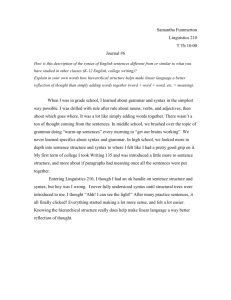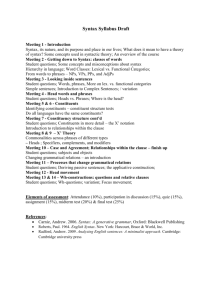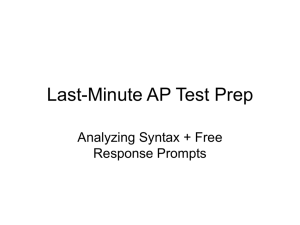Writing About Syntax
advertisement
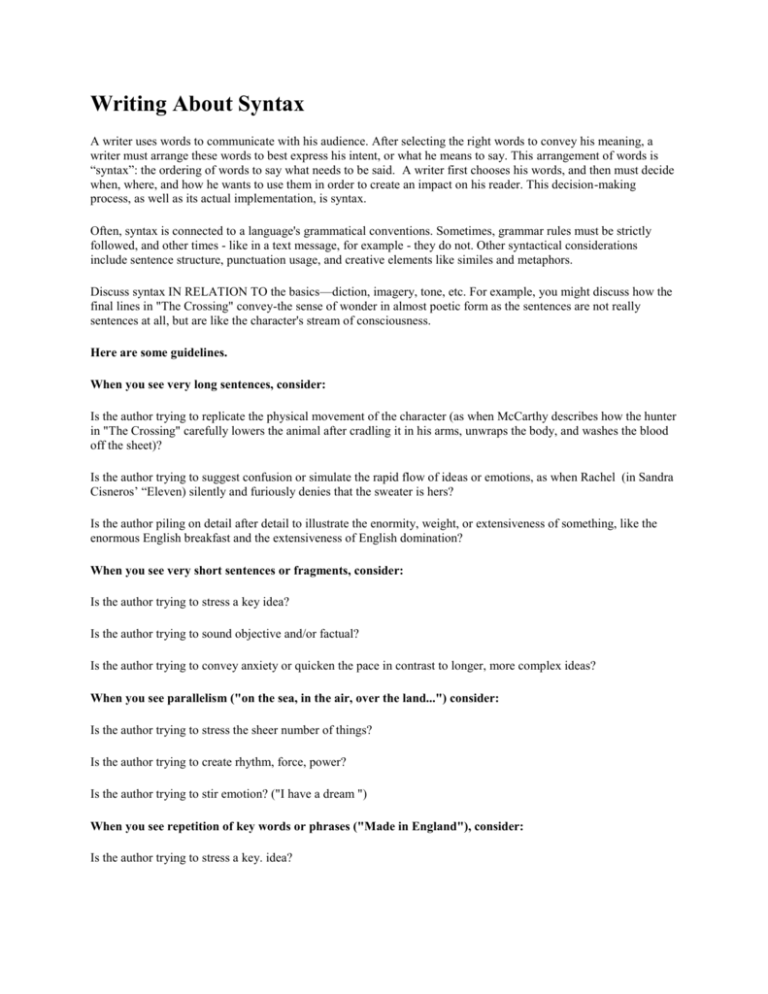
Writing About Syntax A writer uses words to communicate with his audience. After selecting the right words to convey his meaning, a writer must arrange these words to best express his intent, or what he means to say. This arrangement of words is “syntax”: the ordering of words to say what needs to be said. A writer first chooses his words, and then must decide when, where, and how he wants to use them in order to create an impact on his reader. This decision-making process, as well as its actual implementation, is syntax. Often, syntax is connected to a language's grammatical conventions. Sometimes, grammar rules must be strictly followed, and other times - like in a text message, for example - they do not. Other syntactical considerations include sentence structure, punctuation usage, and creative elements like similes and metaphors. Discuss syntax IN RELATION TO the basics—diction, imagery, tone, etc. For example, you might discuss how the final lines in "The Crossing" convey-the sense of wonder in almost poetic form as the sentences are not really sentences at all, but are like the character's stream of consciousness. Here are some guidelines. When you see very long sentences, consider: Is the author trying to replicate the physical movement of the character (as when McCarthy describes how the hunter in "The Crossing" carefully lowers the animal after cradling it in his arms, unwraps the body, and washes the blood off the sheet)? Is the author trying to suggest confusion or simulate the rapid flow of ideas or emotions, as when Rachel (in Sandra Cisneros’ “Eleven) silently and furiously denies that the sweater is hers? Is the author piling on detail after detail to illustrate the enormity, weight, or extensiveness of something, like the enormous English breakfast and the extensiveness of English domination? When you see very short sentences or fragments, consider: Is the author trying to stress a key idea? Is the author trying to sound objective and/or factual? Is the author trying to convey anxiety or quicken the pace in contrast to longer, more complex ideas? When you see parallelism ("on the sea, in the air, over the land...") consider: Is the author trying to stress the sheer number of things? Is the author trying to create rhythm, force, power? Is the author trying to stir emotion? ("I have a dream ") When you see repetition of key words or phrases ("Made in England"), consider: Is the author trying to stress a key. idea?
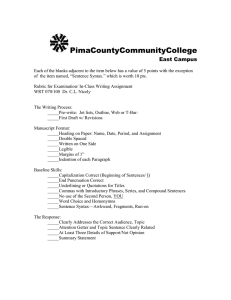
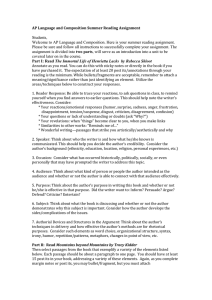


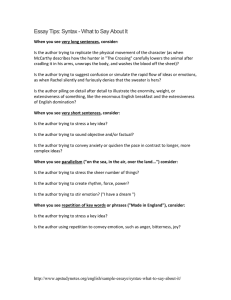

![The Word-MES Strategy[1]](http://s3.studylib.net/store/data/007764564_2-5130a463adfad55f224dc5c23cc6556c-300x300.png)

